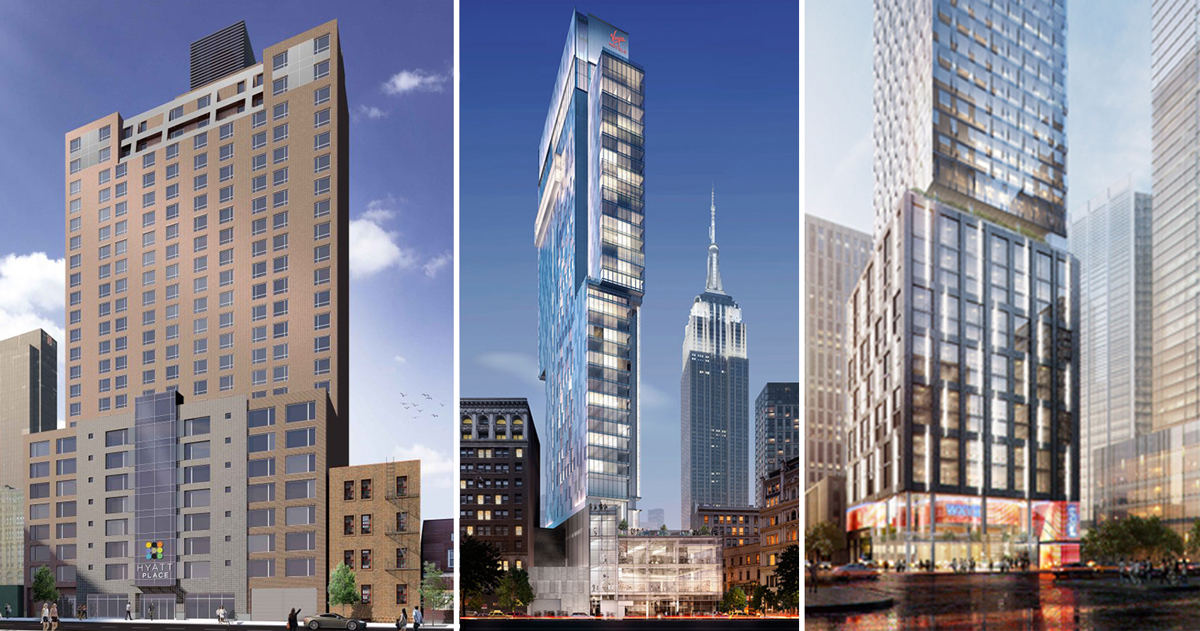Spring came early for the Manhattan hotel market’s long, deep chill.
Revenue per available room – one of the key metrics used to measure the health of the hotel market – turned positive at the end of 2017 for the first time in two-and-a-half years, according to a new report from PricewaterhouseCoopers.
RevPAR grew 1.4 percent during the fourth quarter of last year compared to the same time period in 2016, ending a slide of 10 consecutive quarters as hotel operators wrestled with tens of thousands of new rooms coming online, according to PwC.
While that new supply continues to put downward pressure on the average rate hoteliers can charge for a room each night, it’s had less of an impact on occupancy levels as more travelers continue to visit the city.
“What’s really been driving the increases in RevPAR performance have been the leisure customer,” said Warren Marr, managing director in the hospitality practice at PwC. Marr noted that demand in this cycle has been driven by leisure travelers rather than corporate guests, who typically pay higher room rates.
“You’re still getting strong occupancies, but it’s coming from a different source than it has in prior cycles,” he said.
New York City welcomed an estimated 61.8 million visitors last year (a new record high), up more than 2 percent from 60.5 million in 2016, according to NYC & Company, the quasi-government agency that supports the city’s tourism industry.
The fourth quarter’s RevPAR growth came on the back of a boost in occupancy levels, which grew 1.7 percent year-over-year to 90.6 percent. Average daily room rates (or ADR), meanwhile, fell by 0.3 percent to $317.33.
Industry insiders for the better part of last year have been talking up a turnaround on the horizon for the hotel market, pointing to strong occupancy levels.
In fact, for the full year of 2017, demand grew at a rate of 3.7 percent, outpacing the increase in supply of 2.6 percent.
That’s not to say that the market has entirely turned around, but it does bode well for 2018 and beyond.
For 2017, RevPAR decreased 0.5 percent, though that was a marked improvement from the declines of 2.9 and 2.4 percent in 2015 and 2016, respectively.
Warren said that at the beginning of 2017, there were 33 hotels set to open in Manhattan throughout the year bringing 6,300 rooms, though only 2,000 of those rooms opened by year’s end. There are now 6,500 rooms set to come online in 2018, and Warren said that if a significant portion of that supply gets pushed back into 2019, it should have limited impact on RevPAR.
“I think the amount of supply that actually will come online for 2018 should be manageable,” he said. “Indications are that you wouldn’t expect to see a significant increase in RevPAR or a significant decrease in RevPAR, absent some kind of black swan event.”
There are still some major hotel projects in the pipeline, such as Sam Chang’s 566-room SpringHill Suites & Fairfield Inn in the Garment District at 338 West 36th Street, which is expected to open in October. And in January three hotels are expected to open adding more than 1,400 rooms: The Lam Group’s Virgin Hotel in NoMad, Marx Development Group’s Aloft hotel across from the Jacob K. Javits Convention Center and Chang’s Hyatt Place hotel on 39th Street in the Garment District.
